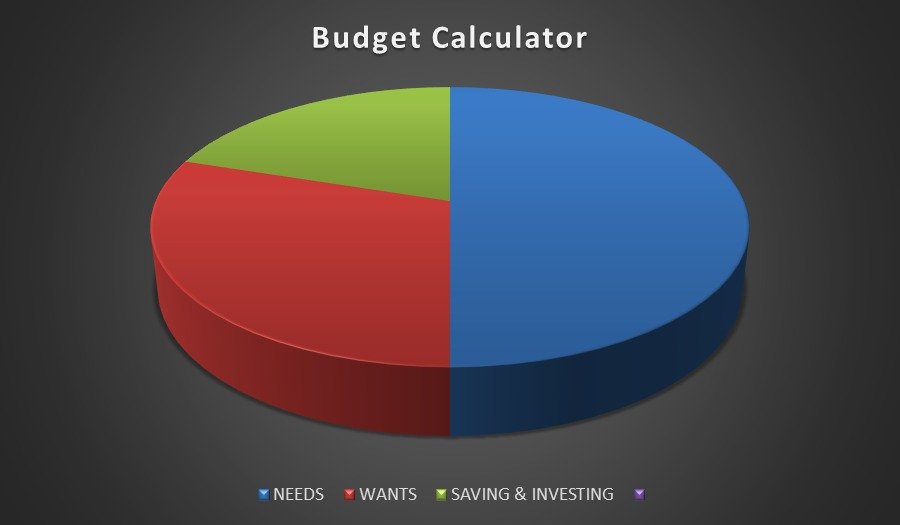A personal budget is essential for achieving financial goals and ensuring retirement security. It includes setting financial objectives, assessing income and expenses, and learning from past mistakes. The 50/30/20 rule is a helpful guideline that allocates income into three categories: 50% for needs, 30% for wants, and 20% for savings and investments.
In Short
Personal Budget
Your personal budget is crucial for understanding your financial goals and ensuring your retirement security. It holds the key to understanding your financial goals. Budgeting is a crucial skill that is both simple and significant for managing personal finances.
Let’s look at its key features and how they fit with your financial goals.
How to Create a Personal Budget
To begin your journey towards financial freedom, it is crucial to establish a specific financial goal. Setting a goal serves as a guiding star, directing you towards your desired financial destination.
It is imperative to conduct a thorough evaluation of your income and expenses. It’s not enough to just have a plan; you also have to put it into action.
Consistency is crucial for adhering to a self-made plan, and learning from small mistakes is equally vital for progress. Much like a ship adjusts its course to manage turbulent waters, you must adapt and grow, learning from tiny mistakes along the way.
Needs and Wants
Identifying what you need and want is the first step in making a personal budget. For example, housing, food, utilities, and transportation are all needs. Dining out, going to the movies, and other non-essential luxuries are examples of wants.
As you progress through your financial journey, evaluate and revise your wants and needs list on a regular basis. Determine whether particular items are still required or whether your priorities have changed over time. By analyzing your spending habits on a regular basis and distinguishing between wants and needs, you can tailor your budget to your changing financial goals.
50/30/20 Rule Budget Calculator
Are you looking to include the 50/30/20 rule in your budgeting strategy?
The 50/30/20 budget calculator makes it simple to distribute your monthly income between needs, wants, and savings. This calculator provides a detailed summary of your finances, allowing you to see where your money is going and how it fits into your financial goals.

Budget Calculator
At the core of this budgeting strategy is the 20% savings goal, which acts as the foundation for your financial security. Prioritizing savings allows you to develop an emergency fund, contribute to retirement accounts, and pay off existing debt, putting yourself on track for long-term financial success.
While the 50/30/20 framework recommends allocating 50% to needs and 30% to wants, flexibility is key.
You can modify these percentages to fit your own needs. For example, if housing costs account for a major portion of your budget, you may need to temporarily dedicate additional funds to needs.
Spending Buckets
In terms of personal budgeting, categorizing your expenses into spending buckets simplifies the process and clarifies where your money is going. The ‘needs’ bucket, which accounts for 50% of your budget, includes necessary everyday expenses. This includes essentials like housing, groceries, transportation, utilities, and insurance fees.
Meanwhile, the ‘wants’ bucket, which accounts for 30% of your budget, represents discretionary spending on non-essential products that improve your quality of life.
This category includes spending for dining out, entertainment, travel, and luxury purchases. Treating yourself to a dinner out, going to the movies with friends, or planning a weekend getaway are all examples of wants. Budgeting for wants helps you create a balance between enjoying life’s joys and remaining financially responsible.
Dedicating 20% of your personal budget to ‘savings and investments‘ is a crucial step in safeguarding your financial future.
This category includes several ways to increase wealth and accomplish long-term financial objectives. Individuals can adopt various financial behaviors, such as setting aside emergency savings, contributing to retirement accounts, and investing in stocks, bonds, or other assets. Prioritizing savings and investments encourage financial discipline and lays the groundwork for a secure and prosperous future.
5 Steps for Creating a Budget
To create a personal budget, follow five steps: set clear financial goals, identify income sources, compile a list of monthly expenses, use effective budgeting strategies, and adopt a learning mindset. This disciplined approach helps achieve financial goals and aspirations by aligning your budget with your aspirations and priorities and optimizing your financial planning process.
Personal Budget in 5 Simple Steps
Step 1: Financial Goals
Write out your goals with exact money amounts and deadlines so you can track your progress efficiently. Setting tangible goals allows you to carefully direct your resources, ensuring that your spending habits are in line with your long-term financial goals.
Prioritizing these goals allows you to make informed financial decisions and take proactive steps toward achieving your dreams. So, grab a pen and paper, write down your objectives, and launch yourself on the path to financial prosperity!
Step 2: Identify Income Statements
The second stage in creating a personal budget is to precisely identify your revenue sources. This includes both your pay check and any additional revenue from other sources.
With this knowledge, you may make informed financial decisions, creating the framework for long-term financial responsibility. So, take stock of your revenue sources, and let’s work toward financial empowerment!
Step 3: Monthly Expenses List
To create a personal budget, it’s essential to create a comprehensive list of your monthly expenses, including essential bills like rent, groceries, debt repayments, and occasional expenses like medical visits and insurance premiums.
A minimalist approach can help manage finances effectively and foster a more intentional spending mindset. Tracking your expenditures for at least a week provides valuable insights into your financial habits and potential savings areas. Understanding your current spending patterns allows for informed resource allocation decisions and more mindful money management in the future.
Step 4: Budget Strategies
The 50/30/20 rule offers a clear framework for managing your finances, recommending that you set aside 50% of your income for needs, 30% for wants, and the remaining 20% for savings and investing. This strategy ensures basic needs are met, providing discretionary spending opportunities and establishing a financial safety net.
By combining this rule with additional tactics such as the Pay Yourself First method, you can tailor your budget to your own financial objectives and priorities, allowing you to take control of your financial destiny.
Step 5: Stay Vigilant and Learning from Mistakes
To create a budget, it’s crucial to be vigilant and learn from mistakes. If your initial draft doesn’t balance, reassess and make adjustments.
To achieve your budgetary goals, determine which expenses are important and which can be decreased or eliminated. Explore options for income increases or savings target revisions. Staying proactive and flexible ensures your budget remains effective and adaptable to changing circumstances.
Regularly monitor your finances, make adjustments, and embrace growth opportunities. With smart money management practices, you can maintain control over your budget and achieve financial objectives.
Final Thoughts
Well done! Once you’ve mastered budgeting, you’ve made the initial stride toward achieving financial freedom. You have gained valuable insight into your financial objectives, income, expenditures, and budgeting strategies by following these five straightforward steps.
Keep in mind that creating a personal budget is about more than just crunching numbers; it’s about shouldering responsibility for your financial future and making wise choices. Continue to be vigilant, reflect on your past mistakes, and proactively make adjustments to your budget as necessary.













Leave a Reply